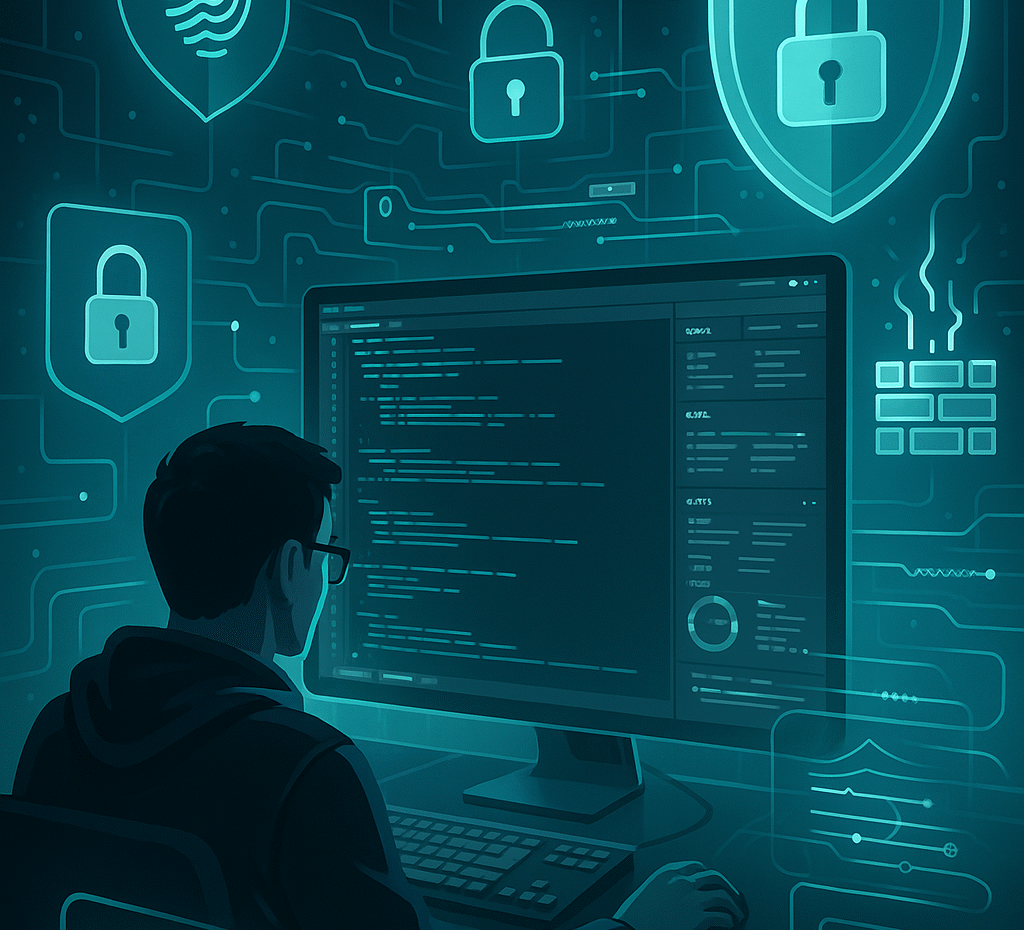- June 26, 2025
- by admin
Cybersecurity Best Practices for Software Development
In today’s hyper-connected world, writing functional code isn’t enough; it must be secure. With cyberattacks becoming more frequent, targeted, and sophisticated, software development teams are no longer just building features they’re safeguarding data, trust, and infrastructure.
Cybersecurity can’t be an afterthought. In 2025, it’s an essential layer baked into every stage of development. Whether you’re building a SaaS product, fintech platform, or e-commerce site, here are essential cybersecurity best practices that every development team should follow.
🔐 Why Cybersecurity Matters in Software Development
Insecure code is the easiest path for attackers to:
Steal sensitive data (user info, credit card details)
Inject ransomware or malware
Disrupt operations or cause financial loss
Erode customer trust and damage reputation
And it doesn’t only affect large enterprises. In fact, 60% of small businesses go out of business within 6 months of a cyberattack.
That’s why secure-by-design principles are now the gold standard.
🛠️ Best Practices for Secure Software Development
1. Shift Left: Integrate Security Early
Don’t wait until deployment to think about security.
Integrate security in the design and planning phase.
Conduct threat modeling before writing code.
Use Security Requirements Checklists early in SDLC.
This “shift-left” approach catches vulnerabilities before they become expensive mistakes.
2. Use Secure Coding Standards
Follow established frameworks like:
OWASP Top 10 (Open Web Application Security Project)
SANS Secure Coding
CWE (Common Weakness Enumeration)
Make secure coding practices part of team training and daily code reviews.
✅ Example: Always sanitize user inputs to prevent SQL injection or XSS attacks.
3. Implement Strong Authentication and Authorization
Use modern, robust authentication methods:
OAuth2, OpenID Connect, or SAML for external services
Multi-Factor Authentication (MFA) for user accounts
Role-based access control (RBAC) for system privileges
Avoid hardcoding credentials store secrets in vaults, not source code.
4. Encrypt Everything (At Rest & In Transit)
Use HTTPS with TLS 1.2 or higher for all communication.
Encrypt data at rest using strong algorithms (e.g., AES-256).
Never log sensitive data (e.g., passwords, tokens, PII).
Even internal APIs or microservices must communicate securely.
5. Scan Dependencies for Vulnerabilities
Modern apps rely heavily on open-source packages. These can become weak links if outdated or compromised.
Use tools like:
Snyk
Dependabot
OWASP Dependency-Check
Automate scans in CI/CD to get alerts before deployment.
6. Automated Security Testing in CI/CD Pipelines
Security testing should be part of your DevOps process:
Static Application Security Testing (SAST) for source code
Dynamic Application Security Testing (DAST) for running apps
Software Composition Analysis (SCA) for third-party components
Automating these ensures every pull request or build gets checked.
7. Implement Secure Logging and Monitoring
Visibility is key. You can’t fix what you can’t see.
Set up centralized log management (e.g., ELK, Splunk)
Use intrusion detection systems (IDS) and SIEM platforms
Monitor login patterns, failed attempts, and anomalous behavior
Make sure logs are immutable and encrypted, especially in production.
8. Regularly Perform Penetration Testing
Hire ethical hackers or conduct internal pen tests to:
Discover hidden vulnerabilities
Simulate real-world attack vectors
Validate security assumptions
Frequency: Every 6 months or after major updates.
9. Keep Frameworks and Libraries Up to Date
Outdated software is a hacker’s playground.
Automate updates where possible
Subscribe to CVE alerts and library release notes
Implement dependency management workflows
It’s not just about writing secure code it’s about running secure infrastructure.
10. Educate the Entire Team
Security is not just the dev team’s job.
Train QA teams to test for security issues
Encourage product managers to understand data flow and risk
Include security briefings in onboarding
A security-aware culture is your best first line of defense.
🛡️ Extra Tips: Security by Design Principles
Least Privilege: Users and systems should only have access to what they need.
Fail-Safe Defaults: Block access unless explicitly allowed.
Defense in Depth: Layered security network, application, database.
Security Through Obscurity Is Not Enough: Don’t rely on hiding information alone.
Keep It Simple: Complex systems are harder to secure and audit.
💼 Common Pitfalls to Avoid
Ignoring security in MVPs (“We’ll add it later”)
Exposing debug tools in production
Misconfigured cloud storage (public S3 buckets!)
Weak or re-used passwords for admin accounts
Poor API rate limiting and input validation
Security debt is just as dangerous as tech debt.
🧩 Final Thoughts
Cybersecurity is no longer a “bonus feature” it’s an expectation. As software becomes more complex and interconnected, the attack surface grows. But so do the tools and best practices to protect it.
If your team is building digital products, now is the time to embed security into every step of the process. Not only will this protect your users it’ll protect your brand, your bottom line, and your future.
In software, fast and secure are no longer at odds. They’re partners in progress.

